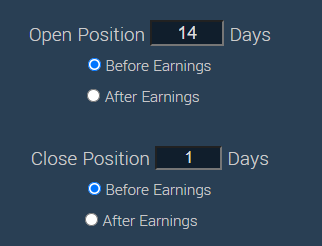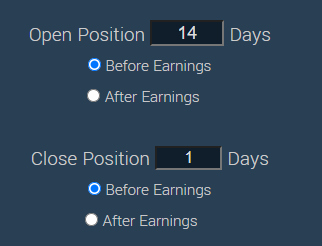Pre-earnings Bullish Momentum Pattern and Trigger in Texas Instruments Inc

Texas Instruments Inc (NASDAQ:TXN) and Technical Analysis: Pre-earnings Bullish Momentum Pattern and Trigger
Date Published: 2020-10-6
Disclaimer
The results here are provided for general informational purposes from the CMLviz Trade Machine Stock Option Backtester as a convenience to the readers. The materials are not a substitute for obtaining professional advice from a qualified person, firm or corporation.Preface: Using Charts and Computations Simultaneously to Find Momentum
Today, 10-6-2020, Texas Instruments Inc (NASDAQ:TXN) has met the technical requirements for the 14-days pre-earnings momentum backtest.
There is a bullish momentum pattern in TXN stock 14 calendar days before earnings. Further, we use moving averages as a safety valve to try to avoid opening a bullish position while a stock is in a technical break down, like the fourth quarter of 2018.
Here's the set-up in great clarity; again, note that the trade closes before earnings, so this trade does not make a bet on the earnings result.
Here is the set-up in Stock TradeMachine®.

And the moving average requirement:

Translated from an image into words:
1. Wait until 14 calendar days before earnings, and if and only if the stock price is above the 50-day simple moving average, get long stock.
If the stock price fails the technical requirement, it's fine, we just put a pin in it and check next quarter. Even better, we can set an intra day alert in Trade Machine that will email and/or text you when both requirements are met.
After rigorous testing over multiple time periods including, but not limited to, the 13-year period from January 2007 through March 2020, and the Great Recession (September 2007 through March 2009) and over 100,000 back-tests, today we demonstrate the technical conditions that have provided a strong intermediate-term bullish trigger for Texas Instruments Inc (NASDAQ:TXN) .
If you 're not making use of computing power to examine patterns, then the algorithms are using you to profit. That's it.
Why not become an algorithm yourself, and take back the edge that is rightly yours from the Wall Street bots -- Tap here to finally find the trading outcomes from charts you've been looking for.
The ES takes the average trade return from each triggered backtest (the 'reward') and divides it by the maximum drawdown (the risk).
The max drawdown is measured as the largest open-to-trough decline in the value of a backtest for each new opening trade.
Our view is that an CML Efficiency Score above 0.8 is very good and above 1.0 is excellent. A number above 1.0 indicates that the average return is in fact larger than the maximum realized loss.
Do technical analysis on purpose with Stock TradeMachine®.
Tap Here to See the Back-test
The mechanics of the Stock TradeMachine® are that it uses end of day prices for every back-test entry and exit (every trigger).
We see 8 wins and 0 losses with a total backtest return of 20.6%.
We note an CML Efficiency Score™ above 1.00, which is excellent.
Tap Here to See the Back-test
We note an CML Efficiency Score™ above 1.00, which is excellent.
Risk Disclosure
Past results are not necessarily indicative of future results. The risk of loss in trading can be substantial, carefully consider the inherent risks of such an investment in light of your financial condition.
Please note that the executions and other statistics in this article are hypothetical, and do not reflect the impact, if any, of certain market factors such as liquidity and slippage.
Here's the set-up in great clarity; again, note that the trade closes before earnings, so this trade does not make a bet on the earnings result.
Here is the set-up in Stock TradeMachine®.

And the moving average requirement:

Translated from an image into words:
1. Wait until 14 calendar days before earnings, and if and only if the stock price is above the 50-day simple moving average, get long stock.
If the stock price fails the technical requirement, it's fine, we just put a pin in it and check next quarter. Even better, we can set an intra day alert in Trade Machine that will email and/or text you when both requirements are met.
After rigorous testing over multiple time periods including, but not limited to, the 13-year period from January 2007 through March 2020, and the Great Recession (September 2007 through March 2009) and over 100,000 back-tests, today we demonstrate the technical conditions that have provided a strong intermediate-term bullish trigger for Texas Instruments Inc (NASDAQ:TXN) .
If you 're not making use of computing power to examine patterns, then the algorithms are using you to profit. That's it.
Why not become an algorithm yourself, and take back the edge that is rightly yours from the Wall Street bots -- Tap here to finally find the trading outcomes from charts you've been looking for.
CML Efficiency Score™
At Capital Market Laboratories (CMLviz), we created a standardized reward to risk measurement for backtests called the CML Efficiency Score™ (ES).The ES takes the average trade return from each triggered backtest (the 'reward') and divides it by the maximum drawdown (the risk).
The max drawdown is measured as the largest open-to-trough decline in the value of a backtest for each new opening trade.
Our view is that an CML Efficiency Score above 0.8 is very good and above 1.0 is excellent. A number above 1.0 indicates that the average return is in fact larger than the maximum realized loss.
Do technical analysis on purpose with Stock TradeMachine®.
3-Year Backtest Results: Pre-earnings momentum in Texas Instruments Inc
Here are the results of a long stock position held for 14 calendar days tested over the last 3-years in Texas Instruments Inc once the two technical requirements have been met:| TXN: Long Stock for Two-Weeks | |||
| % Wins: | 100% | ||
| Wins: 8 | Losses: 0 | ||
| CML Efficiency Score™: | 1.71 | ||
| Return: | 20.6% | ||
Tap Here to See the Back-test
The mechanics of the Stock TradeMachine® are that it uses end of day prices for every back-test entry and exit (every trigger).
We see 8 wins and 0 losses with a total backtest return of 20.6%.
We note an CML Efficiency Score™ above 1.00, which is excellent.
One-Year Backtest Results: Pre-earnings Momentum in Texas Instruments Inc
Here are the results of that same trigger, but focused one just the last year:| TXN: Long Stock for Two-Weeks | |||
| % Wins: | 100% | ||
| Wins: 2 | Losses: 0 | ||
| CML Efficiency Score™: | 7.84 | ||
Tap Here to See the Back-test
We note an CML Efficiency Score™ above 1.00, which is excellent.
Next Steps
If you use Technical Analysis, please do it right. Tap here to try Stock TradeMachine®.Risk Disclosure
Past results are not necessarily indicative of future results. The risk of loss in trading can be substantial, carefully consider the inherent risks of such an investment in light of your financial condition.
Please note that the executions and other statistics in this article are hypothetical, and do not reflect the impact, if any, of certain market factors such as liquidity and slippage.


